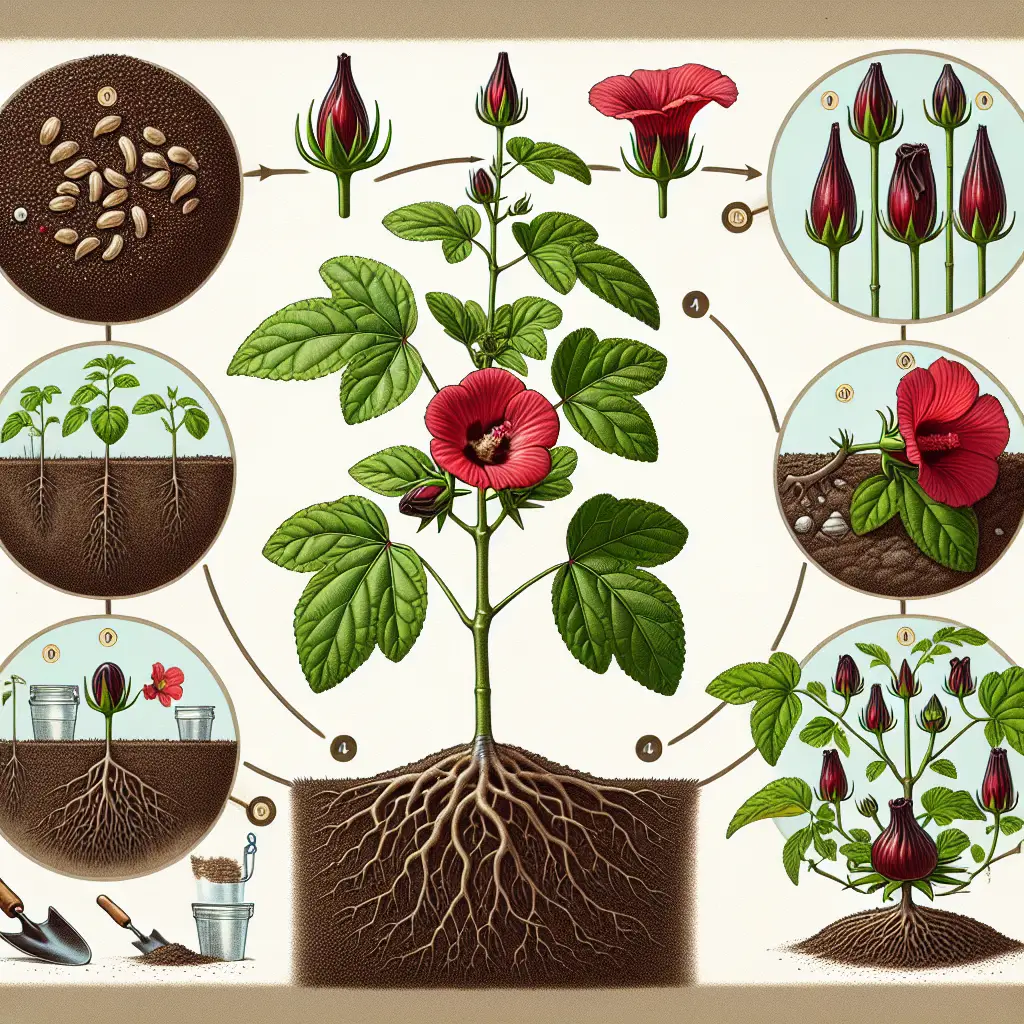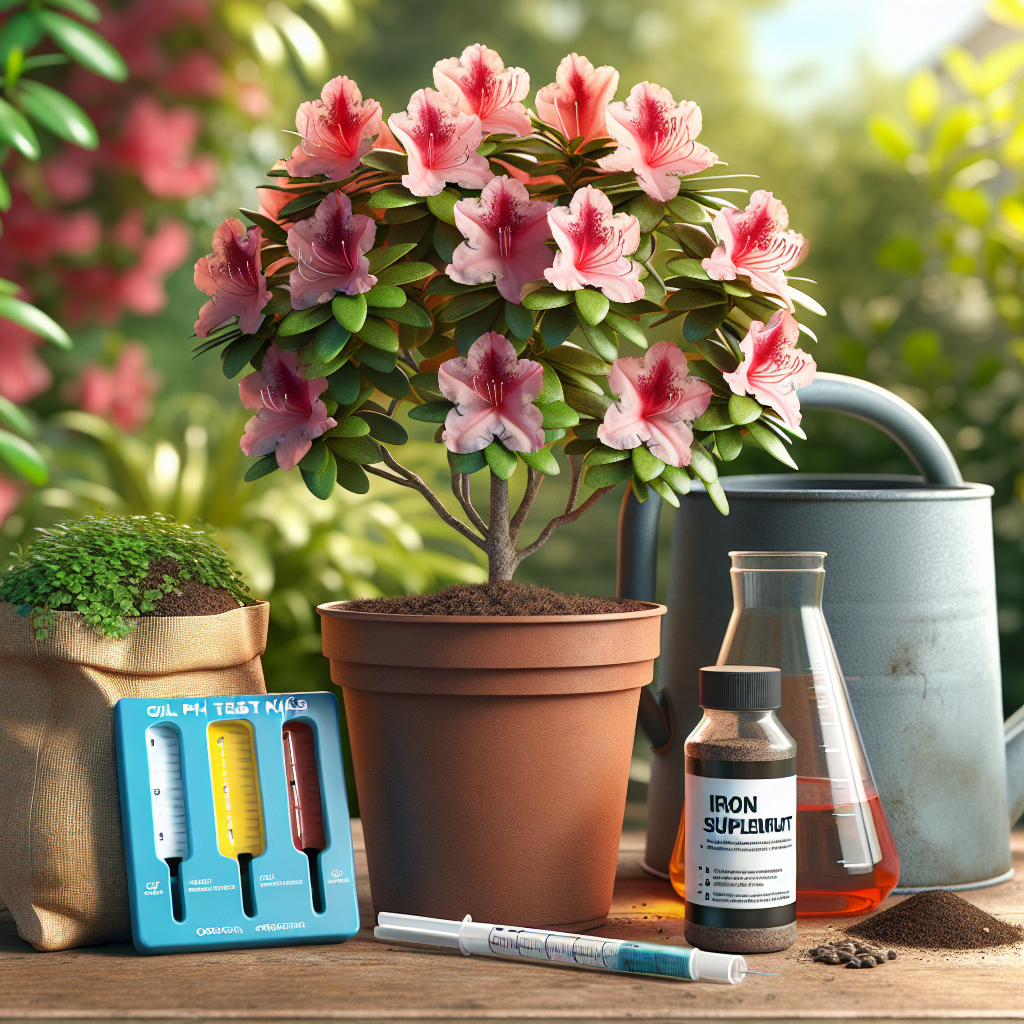Keeping Cutworms Away from Young Seedlings
Updated July 23, 2024 at 9:19 am
Protect your garden’s future bounty with effective strategies designed to safeguard tender young seedlings against the destructive nocturnal habits of cutworms. Dive into our insights on identifying, preventing, and controlling these common garden pests to ensure your plants can thrive.

Understanding Cutworms and Their Impact on Seedlings
As you dive into the world of gardening, you might be familiar with the frustration of seeing your young seedlings devastated overnight. This could be the work of cutworms, which are the larvae of various moth species. These nocturnal caterpillars are notorious for chewing through the stems of young plants, effectively ‘cutting’ them down, hence their name.
Spotting the signs early on can save your garden from these stealthy critters. Cutworms tend to hide during the day in the soil or under debris and come out to feed at night, so you may notice the damage before the actual perpetrator.
Natural and Effective Strategies to Protect Seedlings
Fear not, there are multiple ways to safeguard your plants from these garden pests. You can start by clearing the garden bed of weeds and debris where cutworms like to hide. Implementing crop rotation practices can also disrupt the life cycle of cutworms, keeping populations low.
Another great natural defense is to encourage the presence of predatory insects, birds, and toads that feed on cutworms. Planting pollinator-friendly flowers can attract beneficial insects that act as natural pest control.
Physical Barriers to Deter Cutworms
For immediate protection, physical barriers can be quite effective. You can create collars for your seedlings from toilet paper rolls, plastic cups, or aluminum foil to prevent cutworms from reaching tender stems. Make sure to push these collars at least an inch into the soil for stability and effectiveness.
This method is labor-intensive but it can be a lifesaver for your garden. Checking your plants in the evening and hand-picking any visible cutworms is another way to reduce their numbers substantially.
Utilizing Cutworms’ Natural Enemies
You might want to consider introducing nematodes or parasitic wasps into your garden, which are natural enemies of cutworms. These beneficial organisms can significantly reduce pest populations without harming your plants.
Introducing these organisms can be a learning experience too, as you get to see the interplay of an ecosystem up close. For more tips on managing garden pests, see ways experts suggest successful winter vegetable gardening.
Chemical Controls as a Last Resort
If the infestation is severe and other methods haven’t worked, you might consider applying an insecticide. However, it’s crucial to choose a product that is effective against cutworms while being safe for your plants and the environment.
Always follow the application instructions on the label and consider spot-treating to minimize the chemical impact. Remember, the use of chemicals should always be the last resort after exploring all other natural and less harmful methods.
The Importance of Regular Monitoring
Regularly inspecting your garden, especially during the evening when cutworms are active, can help you catch an infestation early on. Quick action is key when it comes to these pests, as they can do significant damage in a short period.
By combining these strategies and staying vigilant, you can keep your garden cutworm-free and your seedlings safe. And remember, growing a garden is a journey with its ups and downs, but the reward of nurturing your plants to maturity is well worth the effort.
Companion Planting to Ward Off Pests
Besides these direct strategies, companion planting can be quite the game-changer. Some plants are known to deter pests naturally and can be beneficial when planted next to your seedlings. Marigolds and garlic, for instance, are widely regarded as good companions for vegetable gardens.
While there is no guarantee that companion planting will completely protect your seedlings, it’s a method worth exploring. It adds diversity to your garden, which can lead to a more balanced ecosystem, and at the very least, enhances its beauty.
Investing in Beneficial Products
DiPel Dust: Biological Insecticide
- Targets cutworms specifically
- Derived from a naturally occurring soil bacterium
- Safe for beneficial insects like bees and ladybugs
DiPel Dust is a product that can offer an ecological solution to your cutworm problem. It contains Bacillus thuringiensis, or Bt, a bacterium toxic to certain insects when ingested. However, because this product is quite specialized, be sure to apply it when cutworms are known to be active for the best results.
According to gardeners who’ve used it, DiPel Dust has been effective without harming the surrounding ecosystem. If you’ve tried everything else and need a safe product to rely on, this could be it. Remember, always read and follow the manufacturer’s guidelines for use.
Find This and More on Amazon
Implementing Crop Rotation
Crop rotation is more than just a traditional farming practice; it can be a potent tool in your pest control arsenal. Rotating different plants through your garden beds over the years can help lessen the buildup of cutworms, who may prefer certain crops over others.
By varying what you plant each season, you confuse the pests and break their lifecycle. Just like maximizing harvests, crop rotation maximizes your garden’s resilience against pests like cutworms.
Soil Tillage: A Pre-Planting Practice
Tilling your soil might seem like a chore, but it can expose cutworm larvae and eggs to harsh weather conditions and predators. Turning over the soil before planting disrupts the environment that cutworms need to thrive.
When you expose these pests, birds and other wildlife can feast on them, naturally reducing their numbers. Plus, tilling helps you clear out any plant residue, which is often a hiding place for cutworms during the day.
Choosing the Right Time for Planting
Timing can also play a crucial role in protecting your seedlings from cutworms. Planting a little later in the season, when cutworm larvae have mostly turned into moths, can avert many potential attacks on your young plants.
While this might require some patience, it ensures that the most vulnerable stage of your plants—just after germination—coincides with a decrease in cutworm activity, providing a better chance for your seedling’s survival.
Understanding Cutworm Behavior: Leveraging Their Life Cycle
Getting to know your enemy is half the battle won. Understanding the life cycle of cutworms helps you predict their behavior and identify the best windows for intervention.
For example, knowing the time of year when moths lay eggs can guide you on when to apply preventative measures like row covers or the previously mentioned biological insecticide, DiPel Dust.
Preventative Measures: The Magic of Mulch
Mulching isn’t just for weed control and moisture retention—it can also be a barrier against cutworms. A thick layer of mulch makes it harder for newly hatched larvae to reach the surface and find tender stems to feed on.
Organic mulches like straw or wood chips can shield your seedlings and even provide a habitat for cutworm predators. However, be strategic about the timing; too early, and you might just end up providing shelter for overwintering pests.
Attracting Beneficial Wildlife
Your garden can become a sanctuary for cutworm hunters such as birds and toads, and you can encourage them by creating a friendly habitat. Birdhouses, birdbaths, and toad abodes not only add charm to your garden but also serve a functional purpose.
A diverse array of creatures will help in maintaining the ecological balance and keep the cutworm population at bay. You can consider this method as an extension of your pollinator-friendly gardening efforts, benefiting both your plants and the local wildlife.
Baits and Pesticides with Caution
In addition to DiPel Dust, there are other chemical options available if you need to resort to stronger measures. For instance, certain baits laced with pesticides can attract and kill cutworms. However, their use must be handled with care to prevent unintended harm to other insects and the soil.
Products like these should only be used as directed, and you should always look for ones with the least environmental impact. Organic pesticides may be preferable, as they are often designed to break down more quickly and have less residual effect.
Revitalizing Soil Health
Healthy soil is the foundation of a flourishing garden, and it is also your first line of defense against pests like cutworms. By enriching your soil with compost, encouraging beneficial microbes, and maintaining proper pH levels, you can cultivate robust plants that are better equipped to survive cutworm attacks.
Strong plants are less inviting to pests and can recover more quickly if they are damaged. Soil health is a critical aspect often discussed when aiming for successful vegetable gardens throughout all seasons.
Continued Education and Staying Informed
Like any pursuit, gardening is a continuous learning journey. By staying informed through community gardening groups, online forums, and gardening books, you can discover new and innovative ways to protect your garden.
Knowledge is power, and the more you know about cutworm behavior, the better you can tailor your pest control strategies. Keep an open mind and be willing to adjust your methods as you learn what works best for your particular garden ecosystem.
Maintaining a Clean Garden Environment
Lastly, cleanliness in your garden can be your best preventative measure. Keeping garden beds free from excess debris, fallen leaves, and dead plants will reduce the places where cutworms can hide and thrive.
Consider regular garden maintenance as part of your pest management routine. A tidy garden not only looks better but is also less likely to harbor pests that can threaten the health of your plants.
Final Takeaways for Protecting Your Young Seedlings
Protecting your garden from cutworms might seem daunting, but with the right combination of diligence and strategy, it’s definitely achievable. From biological controls like DiPel Dust to creating physical barriers and promoting a healthy ecosystem, each technique works together to form a comprehensive defense plan.
Remember, each garden is unique, and what works for one may not work for another. It may take some trial and error, but in the end, the satisfaction of watching your tender seedlings grow into strong, healthy plants is beyond comparison.
“`html
Seasonal Planning and Timely Actions
Seasonal planning plays a crucial role in the fight against cutworms. Planting too early may expose your seedlings to peak cutworm activity. On the other hand, late planting could skip the prevalent larval stages, giving your plants a fighting chance.
Keep an eye on local weather patterns and entomological reports which may offer insights on cutworm populations. Aligning your planting schedule accordingly can be a simple yet effective measure to avoid these pests.
Educational Resources for Gardeners
There’s always more to learn when it comes to gardening and pest management. Local libraries, extension services, and websites offer a wealth of information that can equip you with the knowledge to defend your garden against cutworm invasions.
Check out resources that detail organic gardening practices or offer advice on integrative pest management for an environmentally friendly approach to garden care, just like the principles applied when gardening through the winter.
Garden Maintenance: A Year-Round Commitment
Maintaining vigilance throughout the year is key. Even during the off-season, it’s important to keep your garden tidy. Dispose of old crops and weeds that could provide shelter for pests like cutworms to lay eggs and overwinter.
Consider planting cover crops during fallow periods that can suppress pest populations while also enriching your soil. This is a long-term strategy that serves multiple purposes for the health of your garden.
Sharing Experience with Fellow Gardeners
Joining a gardening community can offer unparalleled support and advice. Sharing experiences with others can lead to discovering new methods to protect your seedlings from cutworms and other pests.
You can find these communities in local clubs, online forums, or social media groups, all of which can be invaluable resources when seeking help or offering your own tried-and-true advice.
Further Research: Understanding Local Cutworm Varieties
Not all cutworm species are the same, and knowing which types frequent your region can be immensely helpful. For example, the black cutworm is often more detrimental than others, requiring specific responses.
Consulting with local agricultural services can provide you with tailored advice and identification tips so that you can implement the most effective control measures possible for the cutworm species that challenge your garden.
Continuous Improvement: Adapting Year Over Year
As you gain experience in dealing with cutworms, refining your strategies will become natural. The key is to observe what works, make notes, and adjust your practices accordingly.
This evolutionary approach to gardening ensures that with each passing year, you become more adept at protecting your plants and achieving a successful, flourishing garden.
Final Thoughts on Cutworm Management
While cutworms can be a persistent issue for gardeners, understanding their behavior, employing multiple defense strategies, and maintaining a healthy garden environment can collectively create an effective barrier against these pests.
Gardening is as much about nurturing plants as it is about personal growth and learning. Embrace the challenges pests like cutworms present and view them as opportunities to become a more skilled and environmentally conscious gardener.
“`
Shop more on Amazon
Flowers & Plants Team
Flowers & Plants Team



